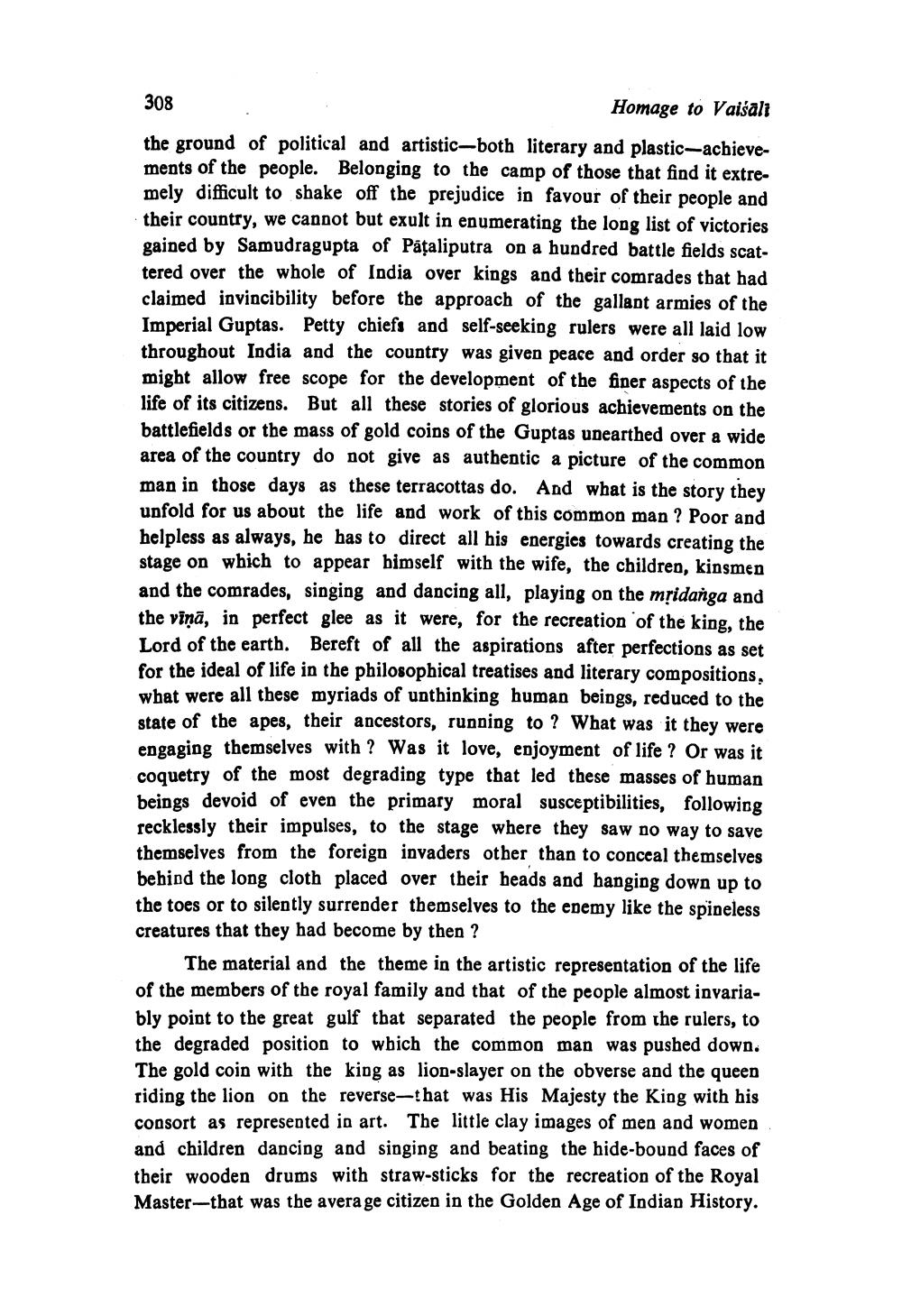________________ 308 Homage to Vaisali the ground of political and artistic-both literary and plastic-achievements of the people. Belonging to the camp of those that find it extremely difficult to shake off the prejudice in favour of their people and their country, we cannot but exult in enumerating the long list of victories gained by Samudragupta of Pasaliputra on a hundred battle fields scattered over the whole of India over kings and their comrades that had claimed invincibility before the approach of the gallant armies of the Imperial Guptas. Petty chiefs and self-seeking rulers were all laid low throughout India and the country was given peace and order so that it might allow free scope for the development of the finer aspects of the life of its citizens. But all these stories of glorious achievements on the battlefields or the mass of gold coins of the Guptas unearthed over a wide area of the country do not give as authentic a picture of the common man in those days as these terracottas do. And what is the story they unfold for us about the life and work of this common man ? Poor and helpless as always, he has to direct all his energies towards creating the stage on which to appear himself with the wife, the children, kinsmen and the comrades, singing and dancing all, playing on the msidanga and the vina, in perfect glee as it were, for the recreation of the king, the Lord of the earth. Bereft of all the aspirations after perfections as set for the ideal of life in the philosophical treatises and literary compositions, what were all these myriads of unthinking human beings, reduced to the state of the apes, their ancestors, running to ? What was it they were engaging themselves with? Was it love, enjoyment of life? Or was it coquetry of the most degrading type that led these masses of human beings devoid of even the primary moral susceptibilities, following recklessly their impulses, to the stage where they saw no way to save themselves from the foreign invaders other than to conceal themselves behind the long cloth placed over their heads and hanging down up to the toes or to silently surrender themselves to the enemy like the spineless creatures that they had become by then ? The material and the theme in the artistic representation of the life of the members of the royal family and that of the people almost invariably point to the great gulf that separated the people from the rulers, to the degraded position to which the common man was pushed down. The gold coin with the king as lion-slayer on the obverse and the queen riding the lion on the reverse--that was His Majesty the King with his consort as represented in art. The little clay images of men and women and children dancing and singing and beating the hide-bound faces of their wooden drums with straw-sticks for the recreation of the Royal Master-that was the average citizen in the Golden Age of Indian History.




